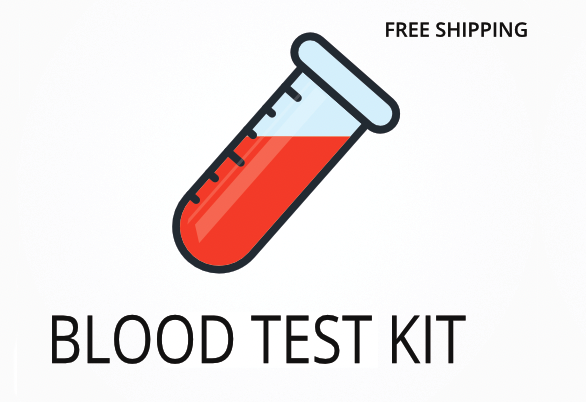Ordering the Rickettsia rickettsii and felis/typhi PCR Whole Blood
This test helps detect the DNA of Rickettsia rickettsii, Rickettsia felis, and Rickettsia typhi in whole blood, which can help identify infections linked to tick or flea bites. Early detection can help guide treatment for symptoms like fever, rash, headache, and muscle pain, especially after possible exposure to ticks or fleas. Interestingly, Rickettsia felis is often overlooked but can cause symptoms similar to other vector-borne diseases, making this test useful for those with unexplained symptoms.
Ordering this test can help you:
- Pinpoint the exact type of Rickettsia infection for targeted treatment.
- Detect infections even before antibodies develop, which is important for early-stage illness.
- Reduce the risk of complications by identifying the infection quickly.
- Support your doctor in choosing the right antibiotics.
- Rule out other causes of symptoms like fever, rash, or joint pain.
Who Should Consider Rickettsial and Typhus PCR Blood Testing
People who have recently spent time in wooded or grassy areas and now have a sudden fever, headache, or rash may benefit from this test. For example, someone who went hiking, developed a fever and muscle aches a few days later, and noticed a tick bite could use this test to find out if a Rickettsia infection is present.
Ordering this test may also be helpful in these situations:
- After a tick or flea bite followed by flu-like symptoms.
- When a rash appears with no clear cause, especially after outdoor activities.
- If you have traveled to areas where Rocky Mountain spotted fever or typhus is common.
- When symptoms like chills, confusion, or joint pain develop after exposure to animals or insects.
- For people with ongoing fatigue and swollen lymph nodes after a cat flea infestation, since Rickettsia felis can be transmitted this way.
Testing can help confirm or rule out a Rickettsia infection, which can help your doctor start the right treatment and avoid unnecessary antibiotics. Delaying this test could mean missing the best window for early treatment, which may lead to more severe symptoms or longer recovery.
Preparing for Rickettsial and Typhus PCR Blood Collection
Fasting is not needed for this test, so you can eat and drink as usual before your blood draw. Always follow any instructions your doctor or healthcare provider gives you to make sure your sample is collected correctly and your results are as helpful as possible.
Labs Included When Ordering Your Rickettsia rickettsii and felis/typhi PCR Whole Blood
| Test Name | Reference Range | Significance | Low and High Levels of Rickettsia rickettsii and felis/typhi PCR Whole Blood |
|---|---|---|---|
| Rickettsia rickettsii DNA (PCR) | Not detected | This test checks for the genetic material of Rickettsia rickettsii, the bacteria that causes Rocky Mountain spotted fever. Detecting DNA means the bacteria is present in the blood. |
High levels mean the bacteria is present and an active infection is likely.
Low levels mean the bacteria was not found, so infection is unlikely or not present at the time of testing. |
| Rickettsia felis DNA (PCR) | Not detected | This test looks for Rickettsia felis DNA, which can cause flea-borne spotted fever. A positive result means the bacteria is in the blood. |
High levels mean an active Rickettsia felis infection is present.
Low levels mean no Rickettsia felis DNA was found, so infection is unlikely. |
| Rickettsia typhi DNA (PCR) | Not detected | This test detects Rickettsia typhi, the bacteria that causes murine typhus, by finding its DNA in the blood. A positive result means the bacteria is present. |
High levels mean an active Rickettsia typhi infection is likely.
Low levels mean the bacteria was not detected, so infection is unlikely or not present at the time of testing. |
Reference ranges may change slightly as labs update their methods or as new research becomes available.
Rickettsia rickettsii and felis/typhi PCR Whole Blood FAQ
Is there Rickettsia rickettsii and felis/typhi PCR Whole Blood testing near me?
This is a test kit that can be collected at a local draw site—check the draw location link at the top of the page. Since symptoms like fever and rash can appear quickly after a tick or flea bite, having a nearby collection site makes it easier to get tested without delay.
How do I interpret the test results?
While your treating physician should always review your results, you can also use our one-on-one test results review service with our clinical team for extra support and clear explanations.
What is the cost of the test?
The price you see includes standard shipping to you and back to the lab, but draw fees may apply at the collection site. Ordering this test can help you find out if a Rickettsia infection is causing your symptoms, so you can start the right treatment sooner.
How often should I retest?
Retesting is usually only needed if symptoms return or if your doctor recommends it after treatment, since these infections are not typically chronic. Repeating the test can help confirm that the infection has cleared or check for new exposure if symptoms come back.
How accurate is the test?
This test uses polymerase chain reaction (PCR) to detect Rickettsia DNA, with a sensitivity of 95% and specificity of 98%. TrueHealthLabs.com partners with CLIA-certified and CAP-certified laboratories to uphold rigorous testing standards for dependable results.
Important Notes
Note: Only R. rickettsii will be reported for residents of New York
Medical Review Board
Reviewed by Jeff Donohue M.D. from Body Logic and Brady Hurst DC, CCCN. Written by True Health Lab’s team of editorial health contributors.
Disclaimer: This information is for educational purposes only and not intended as medical advice. Consult your healthcare provider for personalized guidance.
Why Customers Trust True Health Labs - What People are saying
Also rated 4.6 out of 5 based on 3452 ShopperApproved reviews- See all TrueHealthLabs.com reviews.







